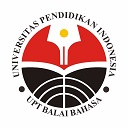The Importance of Vocabulary in Foreign Language Teaching: Strategies and Tools in the Context of Japanese Language Learning
Abstract
Keywords
Full Text:
PDFReferences
Abdulsalam, M., Ali, M. (2026). Needs analysis of Japanese language learning media at the basic level. Indonesian Journal of Multidiciplinary Research, 6(1), 51-58.
Al Husaeni, D.F., Al Husaeni, D.N., Nandiyanto, A.B.D., Rokhman, M., Chalim, S., Chano, J., Al Obaidi, A.S.M., and Roestamy, M. (2024a). How technology can change educational research? Definition, factors for improving quality of education and computational bibliometric analysis. ASEAN Journal of Science and Engineering, 4(2), 127-166.
Brown, J. D., & Yamashita, S. O. (1995). English and Japanese lexical errors in writing. World Englishes, 14(2), 261–273.
Godwin-Jones, R. (2018). Using mobile technology to develop language skills and cultural understanding. Language Learning & Technology, 22(3), 1–17.
Haristiani, N., and Rifa’i, M.M. (2020). Combining chatbot and social media: Enhancing personal learning environment (PLE) in language learning. Indonesian Journal of Science and Technology, 5(3), 487-506.
Haristiani, N., and Rifai, M.M. (2021). Chatbot-based application development and implementation as an autonomous language learning medium. Indonesian Journal of Science and Technology, 6(3), 561-576.
Indradjaja, P.P., and Haryanti, P. (2025). Needs analysis of audio-based learning media for telephone conversations in business Japanese. Indonesian Journal of Multidiciplinary Research, 5(2), 367-376.
Kurniawati, K. (2022). Efforts to improve the vocabulary of Indonesian language for 1st-grade elementary students with hearing impairment for through the application of mnemonic. ASEAN Journal of Community and Special Needs Education, 1(2), 81-88.
Luckyardi, S., Karin, J., Rosmaladewi, R., Hufad, A., and Haristiani, N. (2024). Chatbots as digital language tutors: revolutionizing education through AI. Indonesian Journal of Science and Technology, 9(3), 885-908
Peters, E., & Webb, S. (2018). Incidental vocabulary acquisition through viewing L2 television and factors that affect learning. Studies in Second Language Acquisition, 40(3), 551–577.
Putri, A.M., and Setiana, S.M. (2026). The role of Japanese animation in enhancing language learning. Indonesian Journal of Multidiciplinary Research, 6(1), 19-26.
Rusyani, E., Awaliah, F.A., Maryanti, R., Al Husaeni, D.F., Ragadhita, R., and Susetyo, B. (2022). The application of speaking development on the establishment of object vocabulary in student with hearing impairment. Indonesian Journal of Educational Research and Technology, 2(1), 45-56.
Salsabila, P.H., and Setiana, S.M. (2025). A need analysis of interactive learning media for Japanese verb vocabulary at N3 level. Indonesian Journal of Multidiciplinary Research, 5(2), 279-286.
Schmitt, N. (2010). Instructed second language vocabulary learning. Language Teaching Research, 14(4), 395–422.
Sidik, H., and Masek, A. (2021). The effects of problem-based learning in students reading comprehension for mastering the content and vocabulary acquisition. ASEAN Journal of Science and Engineering Education, 1(2), 87-92.
Stockwell, G. (2010). Using mobile phones for vocabulary activities: Examining the effect of the platform. Language Learning & Technology, 14(2), 95–110.
Webb, S., & Nation, P. (2017). How vocabulary is learned: Mapping out strategies and principles. The Language Learning Journal, 45(1), 3–13.
DOI: https://doi.org/10.17509/japanedu.v10i1.86212
Refbacks
- There are currently no refbacks.
Copyright (c) 2025 JAPANEDU: Jurnal Pendidikan dan Pengajaran Bahasa Jepang

This work is licensed under a Creative Commons Attribution-ShareAlike 4.0 International License.
 Published by:
Published by: Department of Japanese Language Education, Faculty of Language and Literature Education
Universitas Pendidikan Indonesia
 Online ISSN: Online ISSN:2528-5548 |

JAPANEDU: Jurnal Pendidikan dan Pengajaran Bahasa Jepang (e-ISSN:2528-5548) lisenced under a Creative Commons Attribution-ShareAlike 4.0 Internasional (CC BY-SA 4.0)


